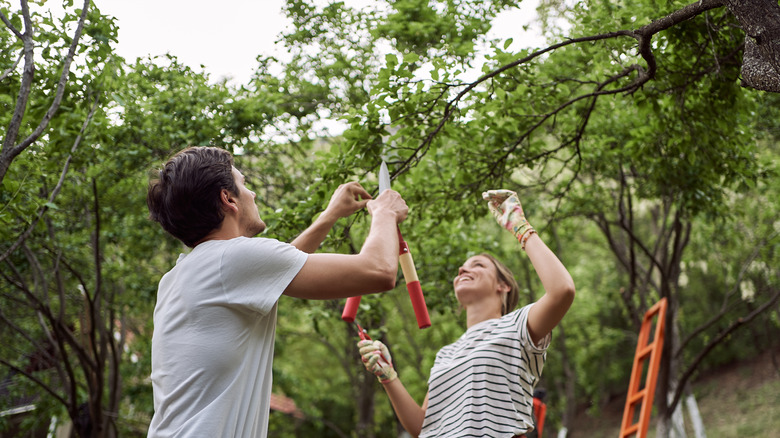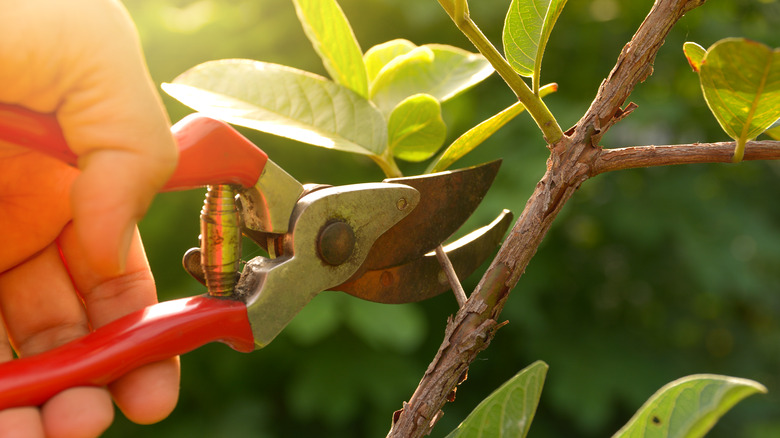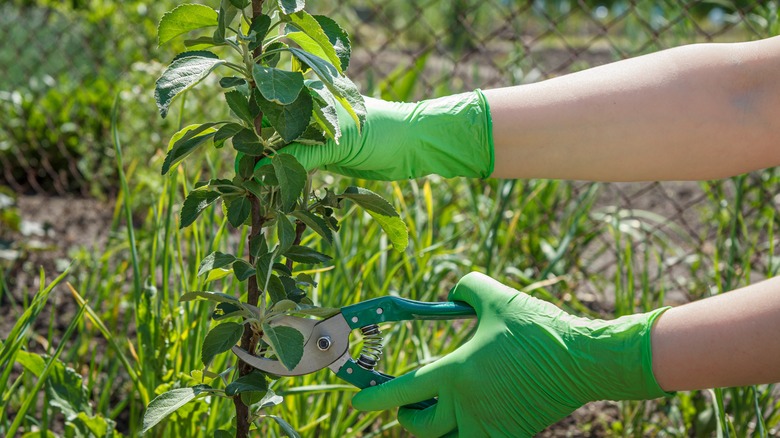TikTok Shares A Genius Tip For Pruning Fruit Trees To Ensure A Bountiful Harvest
Knowing the right way to prune fruit trees is important for their overall health and good fruit production. TikTok gardener @earthnailsandtails has shared a helpful acronym to help you remember the most important things to keep in mind when pruning your fruit trees in summer. The acronym GROW is an easy-to-remember guide for these fruit tree tips. The video illustrates the pruning tasks and the parts of the tree specific to each one, which is a big help to gardeners who want to ensure they're pruning their fruit trees properly.
These specific tips are for summer pruning, starting in June. In summer (assuming that they blossomed in the spring), fruit trees start to form small fruits. Pruning in summer sometimes means removing small fruits that may weigh down branches as the fruits mature. Keeping on top of pruning each year means you won't have to sacrifice too much fruit and better long-term vitality for your fruit trees. Following these summer pruning tips will help encourage the healthy production of fruit.
The first tip in the acronym starting with the letter "G" is "grow outward." This means pruning off any branches that grow upward or inward. Upward-growing branches can make the tree too narrow and tall. Branches that grow inward can crowd each other and interfere with light exposure and the formation of a well-shaped canopy. Encouraging outward growth means a better shape for your fruit tree: rounder instead of taller.
Removing dead and damaged branches
The next letter in the GROW acronym is "R," which the TikToker uses as a reminder to "remove diseased, dead, and dying branches." This can be done at any time, but summer is a good time to address it. A damaged branch might still form buds and fruit, but damage can weaken it and cause an entire limb to fall. It's best to remove smaller damaged branches as soon as you notice them to prevent this.
Diseases can be hard to spot in summer when the leaves are starting to fill out. Look carefully for signs of blight, mildew, rust, or black spots, which can indicate fungal or bacterial diseases. If unsure, trim the branch anyway, as your fruit trees will form new growth quickly. Sometimes gardeners forget to clean bypass pruners before and after pruning – a common pruning mistake that is crucial to avoid to prevent spreading disease. Use soap and water, diluted bleach, or vinegar, and wipe dry with a soft clean cloth.
The letter "O" refers to "outward-facing buds". This means pruning to encourage outward-facing buds so that new branches will grow outward, not inward. Look closely at the branch to see which part the bud is facing. If the pointed tip of the bud is pointed away from the center of the tree, that's an outward-facing bud. Cut close to these buds, leaving about a quarter to a half inch of wood above them.
Get rid of suckers
The last letter in this handy acronym is "W," which means "weed out the suckers." Suckers on fruit trees usually grow from the base of the tree or established roots. These suckers tend to grow fast and draw vital energy and nutrients from the central tree, so it's good to remove them. Removing suckers early also helps trees maintain a good even rate of growth as you shape them by pruning regularly.
Remove suckers by cutting them with bypass pruners. If you notice any roots growing from them, you can also try planting them. In addition to suckers that grow at or around the base of your fruit trees, some fruit trees (particularly apples and pears) get straight upward-growing branches called water sprouts that should also be removed. These branches form quickly, and you should check your tree every summer for them and remove them promptly, as they tend to overwhelm the tree's canopy in a short period.
Suckers and water sprouts can be placed in water after pruning, and if they form roots after a few days, they can also be planted. You can also try brushing the cut end with hormone-rooting powder and planting it in a container. Water sprouts aren't the best choice for grafting, but you can try grafting them if the branches aren't too large. You can also cut these branches while they're blossoming in early summer and place them in water to enjoy as cut flowers.


